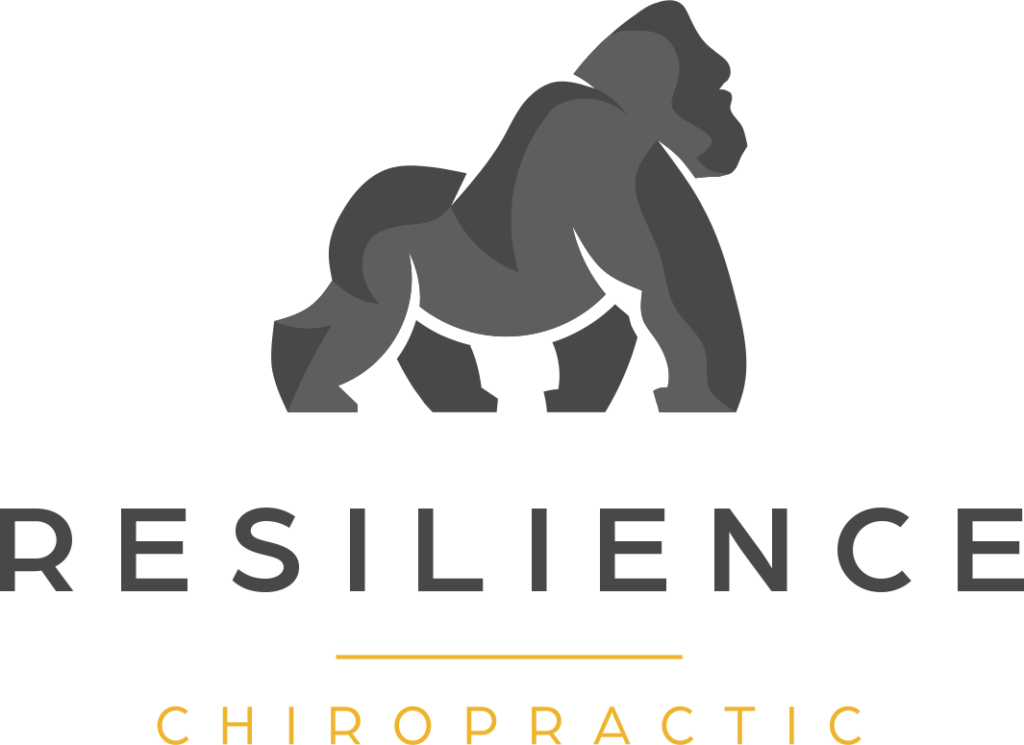You might be surprised to learn that some of the most effective ways to reduce stress don't require complicated techniques or expensive treatments. By incorporating simple practices like deep breathing and mindful meditation into your routine, you can create a calming oasis in your daily life. Imagine stepping outside for a nature walk or sipping a soothing herbal tea as you unwind. These natural relaxation secrets can transform your approach to stress relief, but there's much more to explore. What if you could access even deeper layers of tranquility with just a few additional strategies?
Deep Breathing Techniques
Deep breathing techniques can instantly calm your mind and body, providing a powerful tool to combat stress. When you feel overwhelmed, taking a moment to focus on your breath can ground you and bring clarity.
Start by finding a comfortable position, whether sitting or lying down. Close your eyes if you feel comfortable, and take a deep breath in through your nose. Allow your abdomen to expand fully, filling your lungs with air.
Hold that breath for a few seconds, then exhale slowly through your mouth. As you breathe out, imagine releasing all the tension and stress you've been holding onto. Repeat this process, focusing solely on your breath and letting go of distractions. You might count to four as you inhale, hold, and exhale, creating a rhythm that feels comfortable for you.
You can also try the 4-7-8 technique, which involves inhaling for a count of four, holding your breath for a count of seven, and exhaling for a count of eight. This method not only calms your nervous system but also helps regulate your heart rate.
Incorporating deep breathing into your daily routine can greatly enhance your overall well-being. Whether you practice in the morning to start your day or during a stressful moment, these techniques empower you to reclaim your peace.
You'll find that just a few minutes of focused breathing can transform your mindset and help you tackle challenges with renewed energy.
Mindful Meditation Practices
Mindful meditation practices offer a serene escape from the chaos of daily life, allowing you to cultivate awareness and presence. By dedicating just a few minutes each day, you can enhance your mental clarity and emotional stability.
Start by finding a quiet space where you won't be disturbed. Sit comfortably, close your eyes, and take a deep breath. Focus on your breath as it flows in and out, anchoring your attention in the present moment.
As thoughts arise—and they will—don't judge or engage with them. Acknowledge these distractions and gently redirect your focus back to your breath. This simple act of returning to the breath helps train your mind to remain centered.
You can also explore guided meditations, available through various apps or online platforms. These resources can provide structure and support as you develop your practice.
Consider incorporating a body scan into your routine. As you breathe, mentally travel through your body, noticing any tension and consciously relaxing those areas. This practice not only enhances mindfulness but also promotes physical relaxation.
You might also experiment with loving-kindness meditation, where you silently repeat phrases of goodwill toward yourself and others. This can foster compassion and reduce feelings of stress.
Aromatherapy Benefits
Aromatherapy offers a powerful way to enhance your well-being and reduce stress through the use of essential oils. These natural extracts from plants have therapeutic properties that can positively affect your mood and overall health. When you inhale or apply these oils, they interact with your body's chemistry, promoting relaxation and emotional balance.
Using essential oils like lavender, chamomile, or bergamot can help ease anxiety and create a calming atmosphere. For instance, lavender is well-known for its soothing effects, making it perfect for winding down after a long day. Just a few drops in your bath or diffuser can transform your space into a serene sanctuary.
You can also blend different oils to create a personalized experience that suits your preferences. Experimenting with combinations like eucalyptus and peppermint can invigorate your senses, while a mix of ylang-ylang and sandalwood might help you feel grounded and relaxed.
Incorporating aromatherapy into your daily routine is simple. You can use a diffuser, roll-on blends, or even add oils to your skincare products.
Just remember to dilute essential oils with a carrier oil when applying them to your skin, as they're potent and can cause irritation.
Nature Walks and Green Spaces
Taking a stroll in nature can greatly reduce stress and boost your mood. When you step outside and immerse yourself in green spaces, you allow your mind to unwind. The sights, sounds, and smells of nature create a soothing environment that calms your thoughts and helps you reconnect with the present moment.
Studies show that spending time outdoors can lower cortisol levels, the hormone associated with stress. As you walk through parks or wooded areas, your body responds positively to the fresh air and natural scenery. The vibrant colors of flowers and leaves, combined with the gentle rustle of trees, work together to create a sense of peace.
Make it a habit to take regular nature walks. You don't need to set out on a strenuous hike; even a leisurely stroll around your neighborhood park can do wonders. Focus on your surroundings as you walk. Notice the different shades of green, listen to birds singing, and feel the cool breeze on your skin. This mindfulness practice helps you detach from daily worries and invites a sense of tranquility.
Incorporating nature walks into your routine not only helps reduce stress but also promotes physical health. Regular walking improves circulation, strengthens your heart, and boosts your energy levels.
Gentle Yoga Poses
After enjoying the calming effects of nature walks, you might find that incorporating gentle yoga poses can further enhance your relaxation.
Gentle yoga focuses on slow movements and deep breathing, allowing you to unwind and connect with your body. These poses can help alleviate tension, improve flexibility, and calm your mind.
Start with Child's Pose. Kneel on the floor, sit back on your heels, and stretch your arms forward while resting your forehead on the mat. This pose gently stretches your back and shoulders, promoting relaxation. Hold for several breaths, feeling the tension melt away.
Next, try Cat-Cow Pose. Begin on all fours, arching your back like a cat while exhaling, and then dropping your belly and lifting your head like a cow while inhaling. This flow helps release spinal tension and invigorates your body.
Another great option is the Seated Forward Bend. Sit with your legs extended, and slowly reach for your toes while keeping your spine straight. This pose stretches your hamstrings and calms your mind.
Finally, incorporate Legs-Up-The-Wall Pose. Lie on your back and extend your legs up against a wall. This restorative position enhances circulation and provides a sense of grounding.
Herbal Teas for Relaxation
When you're looking to unwind, herbal teas can be your best friend.
You'll discover calming blends that soothe your mind and body, along with brewing techniques that bring out their full potential.
Let's explore the benefits of these relaxing teas and how they can enhance your stress relief routine.
Calming Herbal Blends
There's something undeniably soothing about a warm cup of herbal tea, especially when life feels overwhelming. Calming herbal blends can be your best ally in finding that much-needed relaxation. You might want to explore chamomile, known for its gentle sedative effects, perfect for unwinding after a long day.
Another fantastic choice is lavender. Its floral notes not only smell divine but can also help ease anxiety and promote restful sleep. If you're looking for something with a hint of sweetness, consider lemon balm. This delightful herb can lift your spirits and calm your mind simultaneously.
Don't overlook passionflower, either; it's been used for centuries to help reduce anxiety and improve sleep quality. You could even try a blend that combines several of these herbs, creating a unique flavor profile while maximizing relaxation benefits.
As you sip your tea, take a moment to breathe deeply and let the warmth envelop you. Each cup serves as a gentle reminder to slow down and reconnect with yourself.
Brewing Techniques Explained
Mastering the art of brewing herbal teas transforms your relaxation experience into a ritual of comfort and mindfulness.
To start, choose high-quality loose leaf herbs or tea bags, as they release more flavor and benefits. Measure about one teaspoon of loose leaf herbs per cup of water. If you're using tea bags, one bag per cup works just fine.
Next, bring your water to a boil and then let it cool slightly; different herbs require different temperatures. For example, chamomile thrives at around 200°F, while peppermint prefers a cooler brew at 190°F.
Pour the hot water over your herbs and steep for the recommended time—typically 5 to 10 minutes. Patience is key here; longer steeping times can enhance flavors and therapeutic properties.
Once your tea is brewed, strain the herbs if you've used loose leaves, and feel free to add a touch of honey or lemon for extra flavor.
Finally, take a moment to inhale the aroma before sipping. This simple act of brewing can elevate your self-care routine, allowing you to savor each moment and truly unwind.
Enjoy your herbal infusion, and let it work its magic.
Benefits of Herbal Teas
Herbal teas offer a soothing escape, providing numerous benefits that can help you unwind and reduce stress. These delightful brews are packed with calming properties that work wonders for your mental and physical well-being.
Imagine sipping on a warm cup of chamomile or lavender tea after a long day; the gentle aroma and taste can instantly transport you to a place of tranquility.
One of the primary benefits of herbal teas is their ability to promote relaxation. Ingredients like valerian root and passionflower are renowned for their sedative effects, helping you drift into a peaceful state.
Plus, herbal teas are caffeine-free, so you won't have to worry about that jittery feeling when you're trying to relax.
Additionally, herbal teas can support your digestion and alleviate tension in your body, further enhancing your sense of calm.
Whether you're enjoying a quiet moment alone or sharing a cup with a friend, these teas create a comforting ritual that encourages mindfulness.
Incorporating herbal teas into your daily routine can be a simple yet effective way to cultivate relaxation and reduce stress.
Journaling for Stress Relief
Many people find that journaling can be a powerful tool for stress relief. It allows you to express your feelings and thoughts without judgment, giving you a safe space to vent. When you write down your worries, it helps to externalize them, making them feel less overwhelming. This act of putting pen to paper can provide clarity and insight into what's really bothering you.
You don't need to follow strict rules when journaling. Just let your thoughts flow freely. Start by writing about your day, your feelings, or any challenges you're facing. You might find that specific patterns emerge, revealing underlying stressors you weren't fully aware of. By identifying these triggers, you can better manage or address them.
Incorporating journaling into your routine can also create a moment of mindfulness. Set aside a few minutes each day to reflect and write. This dedicated time allows you to pause, breathe, and reconnect with yourself.
You could even write about things you're grateful for, which can shift your focus from stress to positivity.
Plus, revisiting your past entries can be enlightening. You may notice how you've grown or how certain situations have resolved over time. This perspective can foster resilience and provide comfort when you're feeling stressed.
Guided Visualization Exercises
Guided visualization exercises can be a powerful tool for stress relief.
By using your imagination, you can create calming mental images that transport you to a peaceful place.
Let's explore how these techniques work and the benefits they offer for your well-being.
Visualization Techniques Overview
While stress can often feel overwhelming, guided visualization exercises offer a powerful way to calm your mind and body. These techniques involve using your imagination to create mental images that promote relaxation and tranquility. You'll find that visualization helps you escape from everyday stressors, allowing your mind to focus on peaceful scenarios.
To start, find a quiet space where you won't be disturbed. Close your eyes and take a few deep breaths. Picture a serene location—maybe a beach, a forest, or a mountain top. Engage all your senses; feel the warmth of the sun, hear the gentle waves or rustling leaves, and smell the fresh air. This immersive experience can help shift your focus away from stress.
You can also use guided recordings or apps that lead you through visualization exercises. These can provide structure and enhance your experience.
The key is to practice regularly, as consistency will deepen your ability to relax through visualization.
Benefits of Guided Imagery
The transformative power of guided imagery lies in its ability to foster deep relaxation and mental clarity. By engaging your imagination, you can create vivid mental pictures that transport you to serene environments, allowing stress to melt away. This technique often leads to reduced anxiety, helping you manage daily pressures more effectively.
When you practice guided imagery, you activate your sensory experiences. You can feel the warmth of the sun, hear the gentle rustle of leaves, or smell fresh flowers—all of which can trigger a relaxation response in your body. This connection between mind and body can enhance your overall emotional well-being.
Moreover, guided imagery can be particularly beneficial for improving focus and concentration. When you visualize successful outcomes, whether in personal or professional endeavors, you're more likely to achieve your goals.
Additionally, this practice can aid in pain management by shifting your attention away from discomfort, allowing you to cope better with chronic pain.
Sound Therapy and Music
In moments of stress, sound therapy and music can provide a powerful escape, transforming your environment and mood. The right sounds can create a soothing atmosphere that helps you unwind and relax.
Whether you prefer gentle melodies, nature sounds, or binaural beats, incorporating these auditory elements into your routine can make a significant difference in how you cope with daily pressures.
Start by identifying what resonates with you. You might find that calming piano music or the sound of ocean waves helps ease your mind.
Try setting up a dedicated time each day to immerse yourself in these sounds. This could be during meditation, while taking a bath, or even when you're winding down before bed. The key is consistency; the more you expose yourself to these therapeutic sounds, the more your body learns to relax.
Consider using sound therapy apps or playlists designed specifically for relaxation. These resources often include tracks scientifically crafted to reduce stress and promote calmness.
Experiment with different genres and styles until you discover what works best for you.
Additionally, don't underestimate the power of your own voice. Singing or humming can release tension and elevate your mood. So, let loose and enjoy the liberating effects of sound.
Incorporating sound therapy and music into your day isn't just a luxury; it's a valuable tool in managing stress.
Embrace this natural relaxation method and watch how it positively impacts your overall well-being.
Digital Detox Strategies
Frequently, our devices distract us and contribute to rising stress levels, making a digital detox essential for re-establishing balance in our lives. To kick off your digital detox, set specific boundaries. Decide on certain times during the day to unplug, like during meals or an hour before bed. This simple step can help you reclaim precious moments and reduce stress.
Next, consider a complete weekend detox. Choose a weekend where you avoid screens altogether. Use this time to reconnect with hobbies, nature, or loved ones. You'll likely find that stepping away from your devices allows you to be more present and enjoy life's simple pleasures.
You can also declutter your digital space. Unsubscribe from unnecessary emails, delete unused apps, and limit notifications. This not only clears your mind but also minimizes distractions, giving you more control over your day.
Another effective strategy is to replace digital time with analog activities. Pick up a book, practice yoga, or try meditation. Engaging in these activities can help you unwind and find calm without the constant pull of technology.
Lastly, consider using apps designed to help you manage your digital consumption. Tools like screen time trackers can bring awareness to your habits and motivate you to cut back.
Conclusion
By incorporating these natural relaxation secrets into your daily routine, you can effectively reduce stress and enhance your overall well-being. Whether you're practicing deep breathing, enjoying a nature walk, or journaling your thoughts, each technique offers a unique way to reconnect with yourself. Don't forget to embrace the calming effects of aromatherapy and sound therapy as well. Start today, and you'll soon find a more peaceful and balanced approach to life amidst the chaos.



